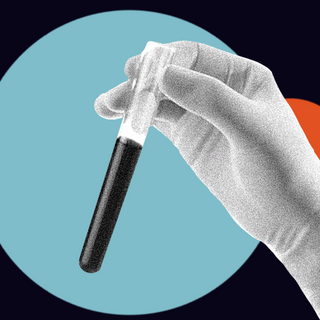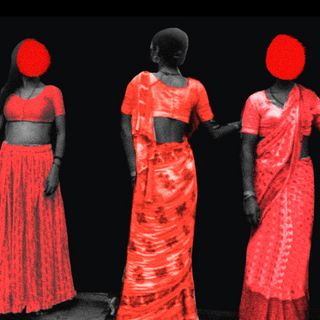
Breast Implants May Be Associated With Risk of Skin Cancer, Warns U.S. Body
The research shows how cosmetic procedures and beauty can be at a crossroads with public health concerns.

A safety notice from the U.S. Food and Drug Administration (FDA) warns that breast implants filled with saline or silicone — the two common types of implants — could cause cancer. It’s rare, but the documented cases are dire enough.
The cancers that develop in the scar tissue surrounding breast implants could cause squamous cell carcinoma (SCC) or lymphoma — cancer that begins in the immune system. The two types of lymphoma that have been associated with breast implants are T-cell and B-cell lymphoma; these are all associated with the skin and immune systems, and aren’t breast cancers as such. But when associated with breast implants, the cancers are located near the breast tissue — which makes SCC and B-cell lymphoma difficult to detect through regular mammograms.
This isn’t the first time research or the FDA has warned against breast implants. The scientific consensus so far has established only a correlation between breast implants and these cancers. But it isn’t immediately clear whether, in the cases where associations were spotted, implants were directly responsible for the development of the cancers.
These concerns point to a gap within cosmetic medicine — often, patients aren’t fully informed of the risks, and research also lags behind in properly assessing the link between cancer and implants. The gap could signify an overall gender bias within medicine itself — given how breast implants and other cosmetic procedures are overwhelmingly administered to women. But it also speaks to the intersection of gender and beauty norms with medicine, which together complicate public healthcare and access.
The problem doesn’t seem to be breast implant or other cosmetic procedures, per se. “We assume this form of medicine and surgery is different from other forms in which people can die. To think it is without risk is foolish for the patient,” Dr. John Grossman, a cosmetic surgeon, told L.A Times. Instead, it’s the systemic apathy toward this form of medicine, combined with neglect toward its primary patient demographic, that invisibilizes the risks. When it comes to breast implants, a significant part of its patient demographic includes those who undergo gender-affirming surgery and are survivors of breast cancer. The conversation is then particularly delicate, jutting beyond aesthetics.
Related on The Swaddle:
People Are Seeking Plastic Surgery to Look More Like Their Filtered Selfies
A collection of complaints have led to the identification of something called Breast Implant Illness (BII) — an understudied condition that isn’t an official diagnosis yet, and is characterized by a vast range of debilitating symptoms. Per anecdotal reports, these symptoms disappear almost immediately after “explanting” — or surgically removing implants. This speaks to the degree to which this medical procedure is understudied.
The discourse around cosmetic surgery has played out through a cultural lens so far. Feminists have long debated cosmetic procedures and their role in reinforcing gender norms where feminists attempt to dismantle them. Some argue that cosmetic procedures are a form of “colonizing” the body for how they’re primarily targeted at women. “…it is men who are wielding the power, either actual men or merely imagined men who occupy the consciousness of women and make them into self-surveying subjects. This is the paradox of colonization. It looks as if women are cultivating their own bodies, whereas in fact their bodies are being colonised by men,” says one scholar. Others suggest that it’s subversive to opt for a procedure that ushers in a “feminist utopia” — one where women can modify their bodies at will, almost as cyborg humans who can shapeshift into any form they desire, reclaiming agency over their bodies and lives in the process of willingly changing them.
But the medicalization of these debates adds another dimension to these discussions: to what extent are we really “free” to opt for medical procedures, when their risks are neither adequately studied nor communicated?
Take the rise of gluteal enhancements, popularly known as Brazilian Butt Lifts (BBLs). BBLs were — and continue to be — all the rage; it’s the procedure of choice of influencers and even teenagers, thanks the Kim Kardashian and Kylie Jenner popularizing it as a trend. But numerous studies have shown that BBLs are among the most dangerous of all cosmetic procedures. One study put its mortality rate at two in every 60,000 people — the highest fatality rate of any cosmetic procedure. Numerous experts have sounded the alarm — especially because unqualified and dubious practitioners perform it with no way to communicate guidelines to them, or even track their mishaps. BBLs continue to take place rampantly and unchecked — not for a lack of expert advice against them, but for the way there are little to no regulations in place that keep unqualified practitioners from performing risky and complex medical procedures.
Related on The Swaddle:
The Anti‑Aging Industry Is Coming For Your Hands
The BBL isn’t the only procedure that’s involved death. “Tummy tucks” come with risks of serious blood clots that travel to the lungs. Liposuction is another procedure that involves removing body fat — and with reporting adverse events not being mandatory, the risks remain understudied. In the recent past, two Indian actors are said to have died from complications related to the procedure, which speaks to how there’s very little patient information or advocacy in the domain of cosmetic procedures.
But the influence of the patriarchal beauty industrial complex is what makes cosmetic procedures such a dangerous terrain — and undermines the self-acceptance and safety which could have otherwise characterized such procedures. Indeed, the aesthetic benefits of cosmetic surgeries remain heavily advertised — pushing their risks further into the shadows. The widespread cultural prevalence — and indeed, acceptance — of cosmetic procedures as trivial, safe, and providing quick “results” makes them influential and enticing to thousands, particularly young people.
Recently, a feminist group in the U.K. called for a ban on such advertisements — and plastic surgeons themselves joined the list of signatories. “Cosmetic surgery adverts are a public health hazard. Their sole purpose is to persuade people to undergo medically unnecessary invasive procedures in order to boost profits,” noted one campaign.
Indeed, the numbers point to a concerning phenomenon. Left without information, regulation, or adequate post-op care, patients who undergo elective cosmetic surgery are at risk of serious health complications not because of the medical procedure, but because of everything around it. Beauty, advertising, business, and medicine converge into an unholy alliance — preying on people who only seek more control over their appearance. In a world where appearance itself can be currency — life, well-being, and health are all at stake.
Rohitha Naraharisetty is a Senior Associate Editor at The Swaddle. She writes about the intersection of gender, caste, social movements, and pop culture. She can be found on Instagram at @rohitha_97 or on Twitter at @romimacaronii.
Related


The Glamorization of ‘Retail Therapy’ Prevents Us From Recognizing Shopping Addiction as a Serious Problem
